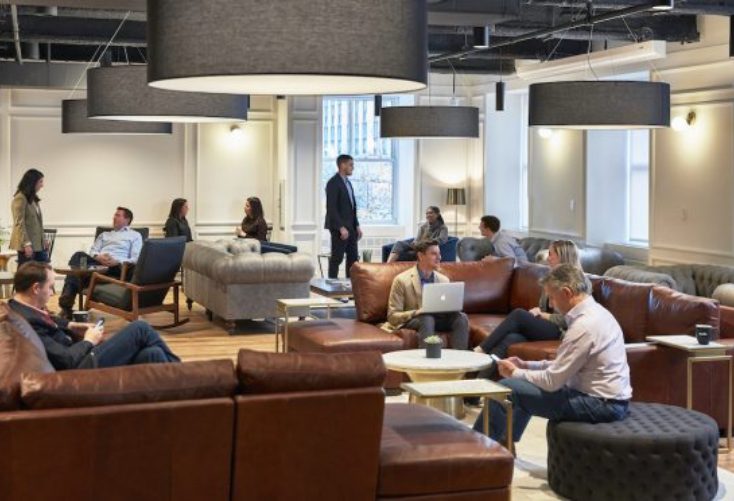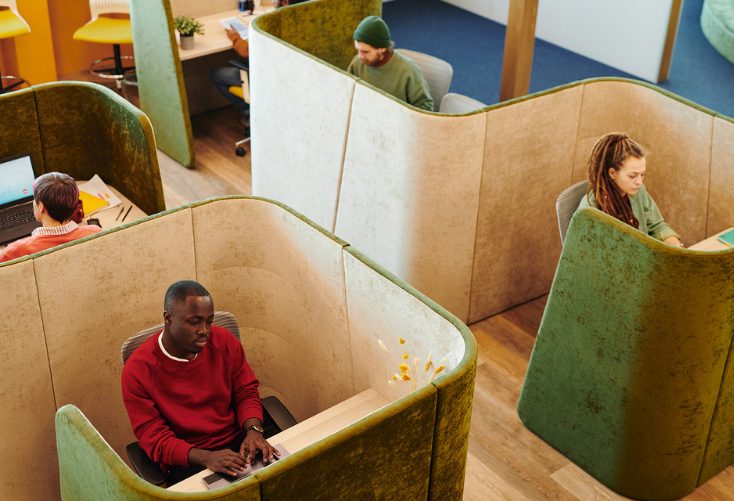Hand selected flexible workspace news from the most reliable sources to keep you ahead of the pack. We find all the latest news, so you don’t have to. Morning and afternoon updates. Stay in the know.
Here’s what you need to know today:
- Tishman Speyer Expands Coworking Brand
- Could Hybrid Policy Address Remote Work Fatigue?
- Demand For Flex Space Grew In The Latter Half Of 2020
- Former WeWork Executives Announce New Company
- How CRE Managers Are Incorporating Hybrid Policies
- Effective Policies For Hybrid Work Arrangements
Tishman Speyer Expands Coworking Brand
Tishman Speyer’s coworking brand Studio will open a new location in a former WeWork space in Manhattan.
The space on Varick Street, along with another location on West 42nd Street, will expand the operator’s footprint in Manhattan to 350,000 square feet.
At Varick Street, Studio will cover three of the building’s 10 floors, with the chance to grow up to 80,000 square feet of space. Additionally, the West 42nd location offers around 40,000 square feet of office space.
“We’re kicking off the official season of going back to the office, and we couldn’t be more excited to welcome customers to 11 West 42nd and 175 Varick,” said Thais Galli, a managing director at Tishman Speyer and the head of Studio. “We are already seeing great interest by companies of all sizes to take advantage of the various options we have to offer. People are excited to come back together, collaborate, and feed off the creative energy that being together creates.”
Members of Studio will have access to private offices, as well as online amenities through a program called Zo that include in-person and virtual wellness and fitness programs, childcare services, medical care, human resources, food delivery and more.

Could Hybrid Policy Address Remote Work Fatigue?
Remote working fatigue is real and has plagued millions of workers over the past year.
According to a JLL survey from March, workers are reporting feeling less productive and would prefer to have flexibility to choose when and where they work.
“While working from home extensively, people feel stuck in an ‘endless day’ and they are losing the notion of time,” said Flore Pradere, Research Director of Global Corporate Research at JLL. “Employees are aspiring to more balanced working patterns.”
Additionally, the survey of 3,300 employees showed that respondents want to work from home just 1.5 days each week, down from the 2 days in a similar survey conducted in April 2020.
This need for choice has led companies to push for a hybrid arrangement that merges remote and in-person working, but how they will implement this new policy is still uncertain.
Companies are approaching hybrid working in various ways. For instance, Ford Motor Company announced that it would be adopting a “flexible hybrid work model” that allows workers to stay home for work that requires concentration, and come into the office for collaborative projects.
“While the notion of hybrid work is great in theory, putting it into practice is no small task,” said Pradere. “But the companies that can keep employees engaged and committed are going to win the war for talent.”

Demand For Flex Space Grew In The Latter Half Of 2020
A new report from The Instant Group has found that demand for flexible office space is growing as companies prepare to bring workers back into the office.
The analysis found that demand for flex offices grew by 21% during the second half of 2020, but transactions decreased by 29% due to purchases involving mainly smaller buildings with less desks.
Secondary cities such as Austin and Denver saw the strongest demand for flex space mostly due to lower costs of living and a higher quality of life than larger cities offer.
“We call them lifestyle cities,” said Joe Brady, CEO of the Americas for The Instant Group. “You have quality of life. If you’re commuting, you’re doing so by car or scooter or bike. The weather’s fantastic, the tax environment … is massively welcoming, and so you can actually achieve what we’ve always talked about. This notion of a work-life balance.”
On the other hand, demand for flex space in New York City fell in 2020, while surrounding areas like Westchester, New York and Connecticut saw a spike. This was likely due to more people migrating to suburban areas for more affordable living arrangements and people wanting to work closer to their homes.
“What you had were folks that were wanting to work near home and having that alternative,” Brady said. “We see that as a reaction. What we’re going to all have to do is track to see if a five-day-a-week workweek will actually return. Our position is that it probably … could be two-and-a-half, three days a week in the office.”

Former WeWork Executives Announce New Company
Former WeWork executives Joel Steinhaus and Doug Chambers have launched a new company that will operate on-demand work spots across the country.
Daybase is described as a combination of a centralized workplace and working from home. In essence, it will serve as a place that isn’t necessarily a company’s main headquarters, nor is it a home office space.
“Historically, companies and employees have been limited to the imperfect choice between working from a centralized corporate office or coworking space, and working from home,” said Steinhaus, CEO of Daybase.”But the pandemic has created a demand for a seamless hybrid work experience.”
Steinhaus supported this new model by citing a Harvard Business School study that found 81% of the laptop class are not prepared to return to the pre-pandemic way of working.
While the company has yet to announce any locations, it may set up shop in the suburbs which have seen a spike in demand as people leave the cities and seek to work closer to their homes.

How CRE Managers Are Incorporating Hybrid Policies
Research from Locatee shows that employee wellbeing will be a top priority for CRE managers in the next five years.
According to the research, 88% of respondents felt that employee wellbeing and satisfaction were crucial factors in nurturing the workplace over the next two years.
Even more, 98% stated they expect their role to change in the next five years, meaning CRE managers need to take more responsibility when dealing with physical and mental health within the workplace.
This means making adjustments to pre-pandemic and current work arrangements. The survey found that 90% of respondents noted their employees had a desire to work more flexibly in the next five years.
Now, CRE managers are reevaluating their real estate footprints in order to incorporate hybrid work policies into their operations. In fact, 70% of firms stated they are planning on or have already made changes to office design to better accommodate hybrid working.
“The pandemic has caused many businesses to reassess their CRE priorities, and we’re seeing an increased importance placed on employees’ wellbeing and satisfaction,” said Thomas Kessler, CEO and cofounder at Locatee. “This has been driven by skyrocketing demand for flexible working models, and our research shows that European CRE managers are leading the charge in creating spaces which are fit for purpose both physically and mentally.”

Effective Policies For Hybrid Work Arrangements
Companies are in the midst of bringing their employees back into the office, but many are taking a “wait and see” approach when deciding when to take this leap.
However, without appropriate planning, companies are setting themselves up for long-term damage. This is particularly important for organizations that have decided to incorporate hybrid arrangements that merge remote and in-office policies.
So how can leaders lay the foundation that seamlessly blends the return to the office and remote working?
For starters, create a ritual that empowers this new arrangement. According to research from Stanford University professor Bob Sutton, rituals help reinforce a mindset across the entire workforce.
Establishing synchronous and asynchronous communication will also be crucial for a hybrid team. With employees working from various locations and time zones, synchronous rituals should be included for meetings and other team-related activities. Asynchronous rituals should be established for emails, focus work and results recaps.
Having written rituals will also be key, especially when it comes to explaining the “why” behind company decisions. Identifying where written documentation can fit into practices and processes, such as brainstorming sessions, makes it easier for employees to remain on the same page when they are in different locations.



 Dr. Gleb Tsipursky – The Office Whisperer
Dr. Gleb Tsipursky – The Office Whisperer Nirit Cohen – WorkFutures
Nirit Cohen – WorkFutures Angela Howard – Culture Expert
Angela Howard – Culture Expert Drew Jones – Design & Innovation
Drew Jones – Design & Innovation Jonathan Price – CRE & Flex Expert
Jonathan Price – CRE & Flex Expert













